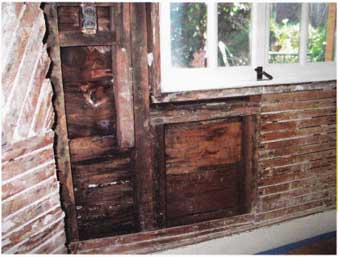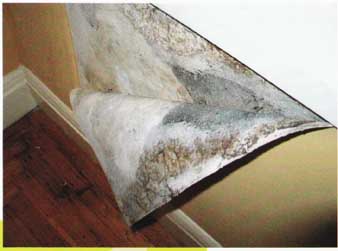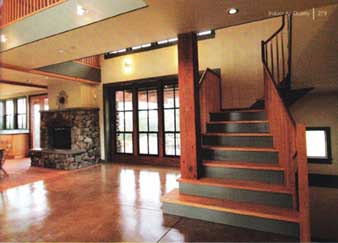AMAZON multi-meters discounts AMAZON oscilloscope discounts
Contaminants in our homes fall into two broad categories—biological and chemical. Biological contaminants can either originate indoors or outdoors and are known as bio-aerosols. The list includes mold, dust mites, pollen, animal dander, and bacteria. Molds produce particulates in the form of microscopic spores and gases and are responsible for that telltale smell in a moldy basement or closet.
Bio-aerosols are extremely small living organisms, or fragments of living things, suspended in the air. Dust mites, molds, fungi, spores, pollen, bacteria, viruses, fragments of plant materials, and human and pet dander (skin that has been shed) are some examples.
They can't be seen without a magnifying glass or microscope. These contaminants can cause severe health problems. Some, like viruses and bacteria, cause infections (like a cold or pneumonia). Others cause allergies.
Both allergic responses and infections may be serious or even fatal. A susceptible person suffers an allergic reaction when a substance provokes the formation of antibodies. We call these substances antigens or allergens. Bio-aerosols may cause allergic reactions on the skin or in the respiratory tract. Rashes, hay fever, asthma (tightness in the chest, difficulty in breathing), and runny noses are common allergic reactions. Some people develop a severe allergic reaction in the lung, which can destroy lung tissue. This is called hypersensitivity pneumonitis. It is not an infection, but repeated episodes can lead to infections of the lung, such as bacterial pneumonia. Hypersensitivity pneumonitis can be triggered by exposure to very small amounts of an allergen once a person is sensitive to it. Symptoms can range from tightness in the chest, coughing, and difficulty in breathing to low-grade fever, muscle aches, and headaches.
Mold
Houses are like a Cracker Jack box—they come with a surprise inside, but in this case the surprise is often mold. Mold spores are everywhere. They can remain inert for decades. All they need is a source of moisture and they can start to grow.

In time, mold can attack the structural integrity of sheathing and framing.
Mold grows on organic material, especially cellulose. The most common location is in the wall cavities of wet areas. This is why our understanding of building science is so important. On occasion the moisture comes from outside sources, leaks in siding and housewrap. Other sources are leaks in plumbing inside the walls. Most often the problem is inadequate air sealing that allows moist air to penetrate into stud cavities, migrating through insulation that doesn’t stop air movement and condensing on studs or sheathing. If the moisture stays constant, as it typically does with air leaks, the mold will create mycelia or roots that eat into the wood. This is the mold organism. By the time you see evidence of mold, it has already grown into the wood or paper that supports it. Like an iceberg, most of the problem is invisible.
A PUNCH LIST FOR MOLD Building green lessens the risk of mold, but what do you do when mold begins to grow? • If you find mold or mildew, try to find and eliminate sources of moisture that are feeding the colony, such as a plumbing leak. Reduce relative humidity inside and dry the air with a chemical or mechanical dehumidifier. Drip pans should be emptied daily. • Open closet doors to allow air to circulate. Use a 40-watt light bulb to dry and heat air in closets. • Vent bathrooms and clothes dryers to the outside. • Trim back trees and shrubs around the house to let in more light and sun. • Remove debris from your yard, roof, and gutters. • To clean mold and mildew growth from walls use chlorine bleach, diluted three parts water to one part bleach. Commercial products can also remove mildew and mold. Follow product instructions carefully. Very moldy Items should be replaced. • Change heating and cooling system filters monthly. • Vacuum air return covers or screens regularly. Check air conditioners for mold before each cooling season and have coils cleaned as needed. • Have ductwork checked for loose insulation, leaks, or signs of condensation where the system enters the house. Insulate ducts on the outside of the ductwork. Keep ductwork clean. • Use an electronic air cleaner or HEPA filter. • Make sure that crawlspace vents work and are not blocked. If your cooling ductwork runs through the crawlspace, consider closing crawlspace vents during the summer. Using fans in crawlspaces during the summer when humidity is high may increase the relative humidity in the crawlspace and inside the home. Use fans only when outside humidity is well below 50%. |
Mold and mildew may also be found in the ductwork of your heating or cooling system. If there are leaks in the ductwork, or places where moisture and outside air get into the system, mold and mildew can grow on accumulated organic material. Sometimes they are found in the coils of an air conditioner or in the connection between the air conditioner and the ductwork. Moisture problems are worse where ductwork insulation is on the inside as opposed to the outside of the duct. The insulation’s porous surface collects dust and moisture. Mold and mildew may also grow on dirty furnace and air-conditioning filters. Plumbing leaks and dampness in attics, basements, and crawlspaces can increase humidity inside your home and promote the growth of agents that will be released as bioaerosols.

Mold growing inside this wall cavity was apparent
only when wallpaper was peeled away. Warm, moist air condensing inside
wall cavities is one possible cause.
Mold colonies produce more spores. They can cause unsightly stains and may release varying levels of toxic chemicals called mycotoxins into the air. Some molds are harm less, some beneficial, and others are deadly. The primary concern is not what type you may have in your home but how to prevent it from growing. From a practical standpoint, that means keeping moisture out of wall and ceiling cavities, topics that are discussed in detail in sections on building science and siding. Spray mold prevention coatings on the studs before the trades arrive onsite. Coatings will inhibit future mold growth.
The health impacts from mold range from slight allergy-like symptoms that won’t go away to serious flu like problems and even long-term disabilities like asthma. Children are affected the most by mold conditions and are most likely to suffer long-term problems from exposure.
Fixing a house after mold has been found is costly and often very difficult. What’s more, the discovery of mold may raise other troubling questions. Do you, for example, report it to your insurance company? Today’s litigious society has made insurance companies skittish about mold. You may even have a disclaimer in your policy excluding claims related to mold. If not and you do make a mold claim, your insurer may drop your policy. If that weren’t enough, when you sell your house you will be required to disclose any known problems. Many potential buyers won’t even look at a house that’s had mold problems. Making a house mold- proof by controlling moisture is the best and simplest solution.
Dust mites
If you think the movie Alien was scary, just look at a dust mite. Dust mites and their waste are the most common allergens in indoor air. Dust mites eat human and pet skin (dander) as it is shed. and when a person sheds some 7 million cells per minute, there’s plenty of chow to go around. Dust mites live in rugs and carpets, sheets, mattresses and pillows, and upholstered furniture. Between 10 percent and 15 percent of the population is allergic to dust mites. Of the people who have other allergies, 40 percent also are allergic to dust mites. They can’t be eliminated, but reducing the amount of floor area covered by carpeting can help.

Unlike carpeting, which can trap dust, animal dander, and moisture, the stained concrete floors of this handsome interior
won’t degrade indoor air quality.
Chemical contaminants
Chemical contaminants include both gases and particulates. They come from many sources, some obvious and some not so obvious. The usual list of suspects would include combustion gases from water heaters and kitchen ranges, pesticides, smoking, and radon. But don’t stop there. The list also should include building materials and furniture, carpet, countertops, cleaning products, and personal care products like hairspray.
Volatile organic compounds (VOCs) are chemicals that evaporate easily at room temperature—that’s the “volatile” part. “Organic” indicates that the compounds contain carbon, primarily from petrochemicals. VOCs are often detectable by smell, but not always. Either way, they can be harmful. We come into contact with thousands of different kinds of VOCs: solvents like benzene and toluene, formaldehyde, and ethylene glycol to name but a few. They are found in a variety of everyday products that give themselves away by odor— mothballs, varnishes, paints, gasoline, and vehicle exhaust—but many others that seem very ordinary: caulk, cosmetics, air fresheners, newspapers, vinyl flooring, carpets, and upholstery fabrics. Exposure can trigger a variety of acute and chronic conditions, from eye irritation, headaches, and nausea to liver damage, nerve damage, and cancer. Most studies to date have been conducted on single chemicals. Less is known about the health effects of combined chemical exposure that is common inside our homes.
We’re not going to rid houses of hairspray, kitchen ranges, and chlorine bleach. Nor are we going to stop lighting candles, cooking, or breathing. But that still leaves a number of pollutants that can be monitored more carefully and , in some cases, avoided altogether. Combustion gases, for instance, enter the living space through cracks in the combustion chamber of a furnace, or from back-drafting due to negative air pressure inside the house. Yet carbon monoxide poisoning is preventable via regular furnace inspections, sealing ductwork, or buying sealed-combustion furnaces and water heaters. Every house should be equipped with carbon monoxide detectors. The best health protection measure is to limit exposure to products and materials that contain VOCs when possible and to choose low-VOC or no-VOC products whenever possible.
Prev.: Setting Standards
for Exposure
Next: Building Products that Off-Gas